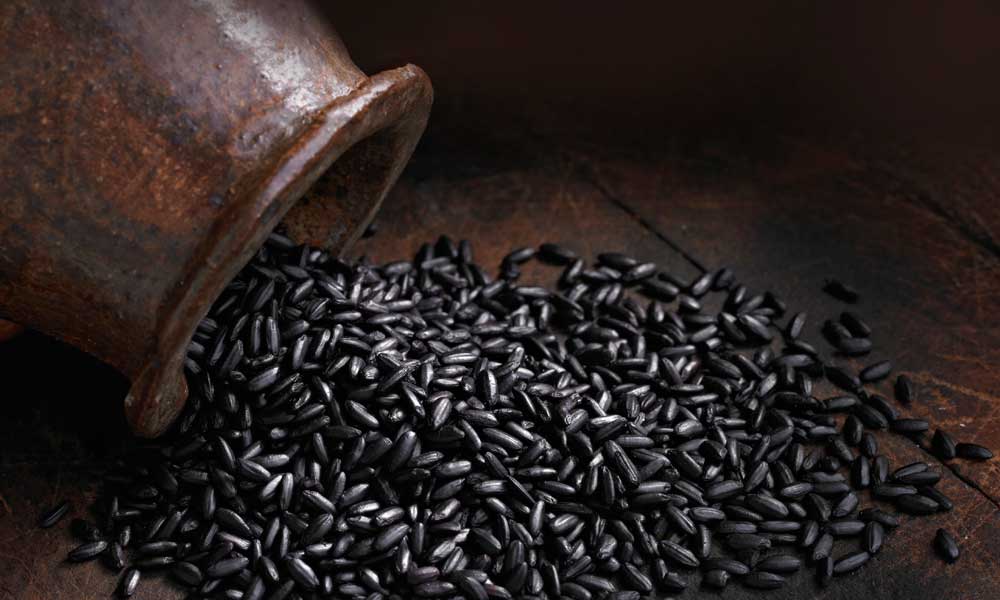Black Rice Forbidden No More
These days, you needn’t be an emperor to enjoy this healthy, nutty treat.

A food so good you’re not allowed to eat it? That was black rice, the “forbidden rice” of imperial China, a scarce grain said to be permitted only to royalty. Today it’s a guilt-free Asian grain that’s gaining steam because of its delicately nutty taste and its substantial health benefits. It’s less sticky than white rice, less chewy than brown, and loaded with nutrients that can help you grow old and wise like Confucius.
Power up
Black rice is rich in antioxidants, particularly anthocyanin, which can reduce your risk of infection and of heart attack and cancer. Anthocyanin is concentrated in the kernel’s black bran outer layer and gives it its dark color.
A 1/3-cup serving has as much fiber as a full cup of brown rice, so it’s great for your digestion. Black rice is rich in vitamin E (which strengthens the immune system and promotes healthy skin and eyes); iron (which helps make red blood cells) and manganese (which aids the nervous and reproductive systems) and other minerals.
Did you know?
First cultivated in China around 150 B.C., black rice was grown in small quantities exclusively for the emperors and nobility, who even then knew of its health benefits. Legend has it that during China’s Ming dynasty, possession of black rice by a commoner was a capital crime. Today black rice is still grown in relatively small quantities, mostly on family-owned farms in China, the Philippines and throughout Asia. Lotus Foods of Richmond, Calif. began importing the grain in 1995 after co-owners Ken Lee and Caryl Levine discovered it during a trip to China. The company marketed black rice to San Francisco restaurants, which began serving it as a side dish to make its dinners more colorful.
The grain has since caught on with an increasingly health-conscious public hungry for whole-grain and gluten-free options. Black rice’s popularity swelled after TV personality Mehmet Oz, M.D., praised it to his national audience.
Buy/store/serve
Available at gourmet or Asian specialty food stores, black rice is good as a side dish or in a pilaf, a stir-fry or a salad. It cooks in 30 minutes in one of two ways:
- Absorption. Cook slowly in a pot or rice cooker until the water is absorbed. (Use two cups of water for every one cup of rice.)
- Boiling. Boil black rice like pasta, stirring often to prevent sticking, until it reaches desired tenderness. Drain, then rinse with cold water.
Store uncooked black rice in a sealed container in a dry, dark and cool place. Because of its bran content, black rice only keeps for approximately 6 months (less in hot, humid weather). Keeping uncooked black rice in the refrigerator can extend its shelf life slightly.

